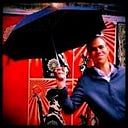
We’ve introduced the magical and mysterious word that is “prototyping”, from the different ways you can prototype through to what happens once a prototype grows up. We even made Thai green curry to describe what prototyping means…in the interests of research, of course.
Want to discover a new word? The ancestor of prototyping? Welcome to the pretotype, a term I discovered thanks to @liamablack. What does that mean? Here’s how @pretotyping defines it:
“A pretotype is a partially mocked-up of the intended product or service that can be built in minutes, hours or days instead of weeks, months or years. The art and science of pretotyping is aimed to help innovators:
- Decide what features can — and should — be mocked-up (or dramatically simplified)
- Use mock-ups to test and collect feedback and usage data systematically
- Analyse usage data to determine their next step
Or, put more simply: making sure you are building the right ‘it’ before you build ‘it’ right. ‘It’ can be anything — a social experiment, a product, tool, a way to transform behaviour — it’s all about thinking how can you create an experiment as early as possible to save yourself time and money.”
1. Mechanical Turk: human intelligence works behind the curtain to simulate complex technology
Pretotyping calls this the “mechanical turk” method after the fake chess playing machine created in the 18th century. But the film the Wizard of Oz, also simulated advanced props with varying effects on the actors and actresses!
- Take a photo of whatever technology you want to simulate, whether it’s your smart phone, laptop or even…fridge
- Blow it up on an image-making program to A1 or even A0 size and print it out on card
- Create your features or go onto The Noun Project and blow up & print out the features you want
- Get a couple of people to hide behind the blown up image of the technology and someone to hold the features
- Get someone else to play the user and press or slide the features and the person behind to move them
- If you really want to push the bucket, go to your local theatre and ask them for any props you could borrow!
2. Fake Door: simulating new product or service, simply to capture interest in the apparent offering
Pretotyping give the example of McDonalds trialling McSpaghetti by putting it on the menu without actually having the product in restaurants and when people asked for it, they said it was sold out. We worked with students who simulated services of the prototype…or pretotype they’d designed.
Here’s an example below of OnTapp, a service connecting older people who can’t get it out of the house and who want to get their chores down…and social contact, with younger people who want to get fit…and do good.
3. Pinocchio: simple models to enable experimentation around form and usability
The founder of Palm Computing mocked up a Palm Pilot with wood and paper and carried it with him for weeks pretending it was a working device, while the example below overlays paper prototypes over a smart phone to simulate a care app and another example featuring a bus tracker product.
4. Impersonator: an existing product wrapped in a new “skin” or presentation layer
Pretotyping give the example of a service that bought a case of bottled water and changed the label to test whether people would actually buy this new product. People who designed prototypes in our programme have used existing platforms like Facebook in the example below to show the user interface of their service.
5. Minimum Viable Product (MVP): simplest possible version of the final product
By building something that people can use the basics of the service, you can then get their feedback before refining it. This animation by Pimble as part of our programme showed how the service meets a need, how it works and how people can benefit. Of course, it would need to refined to connect to other platforms, but it shows the unique experience people would get using it.
6. One-Night Stand: a mocked up ‘set’ standing in for the fully built experience
Once you’ve prototyped the different elements of the desired user journey, you can prototype how they would work together as a service, as this video by our winner Kemuri demonstrates. You might then still need to test how (well) prototypes work within the existing processes, roles and environment of the service, what products / environments are needed to describe the improved service, what processes will support the delivery of the service, as well as what skills/roles and behaviours are required to deliver the service.
